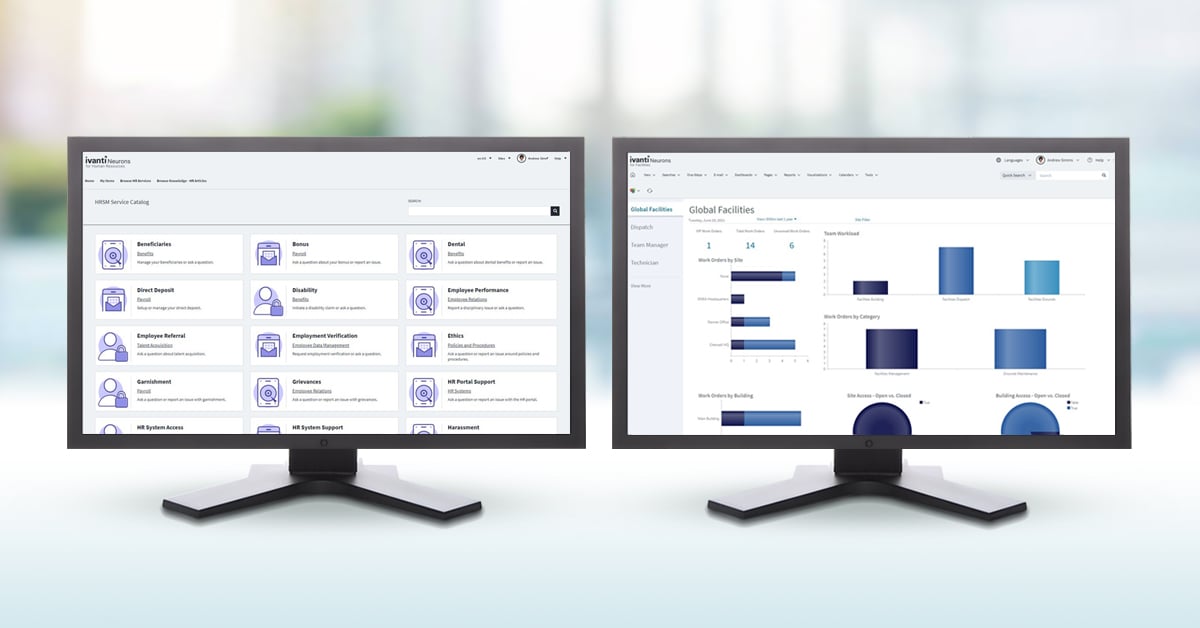Apply Service Management Beyond IT? No-Brainer.
IT Has Been Heads Down...But It’s Time to Look Up
It’s no secret that the past year and a half has been challenging for all departments across organizations. One unsung hero? IT.
IT is quite literally responsible for keeping the lights on in a work environment that has shifted primarily online. That’s no small feat and encompasses many functional services like emergency response, asset management of laptops and other equipment loans, responding to an exponential increase in service desk tickets, fortifying the security of sensitive information in the shift to remote work, enabling other departments in delivering services remotely, etc.
And that’s on top of continuing to drive priorities like digital transformation and addressing the complexity that comes with an increasing number of endpoints from things like personal devices, networks and self-service devices. That’s also while the business demands for IT projects continue to rise, particularly around the development and deployment of applications for which they’re accountable for the quality of the employee experience and governance. Plus, we can’t forget they’re also being asked to justify the value of capital and OpEx investments to prove IT is in alignment with strategic business objectives.
It’s Clear: IT Maturity is the Way Out
IT has been going above and beyond the call of duty to maintain business continuity – and some. There have been long nights, lost weekends and high pressure as teams have done and are still doing more than they could have ever anticipated to keep pace with the changing technology environment. All of this said, things have come to a head and this breakneck pace isn’t sustainable…at least not without more maturity.
But the truth is that IT service management (ITSM) maturity at most organizations has been stalled for years. The average maturity of an IT organization’s service management processes is actually ~5 on a 10-point scale. There are unused chatbots and knowledge bases, out-of-date service catalogs, inaccurate CMDBs, limited automation, inconsistent problem management, etc. More sophisticated processes have been traded for budget and time to put out other fires. It’s been quite the vicious cycle.
If there’s one thing that has changed, it’s been the path to maturity, which has evolved quite a bit over the past few years. Achieving maturity is no longer about looking inwards to try and implement every ITIL process and best practice under the sun but looking outwards instead. Adopting service management across every line of business from HR and Facilities to Legal and Project Management is how you do it. Enable these teams to manage service, with IT at the center to guide them in avoiding their same pitfalls.
The risks of IT not taking a leading role in governing and guiding the business as digital transformation continues to accelerate, as complexity increases and as the demand for better employee experience rises are plentiful. They include issues like diminished employee experience, productivity and efficiency, and an increase in Shadow IT, lack of IT engagement, more disparate systems, diverted budget, and a lack of IT relevance in line of business service management.
Extending service management to other parts of the business is how IT teams can mature. And it’s how they can scale without having to add excessive headcount.
Shift from Reactive to Proactive Strategy
By applying service management practices to other departments across the organization and by enabling them to deliver service to employees in a modern, unified way has many benefits.
- Improved Employee Experience
Employees want to be able to find answers to their questions and want quick resolutions to their problems, whether they’re working in-office or remotely. Not knowing who to go to for what and where, as well as the status of their requests can create a very frustrating service experience.
By extending service management across other lines of business, you can provide employees a one-stop shop self-service portal that they can utilize for all their needs. Knowledge Bases help employees find answers, Service Catalogs help them understand what they can get help for, and automated status notifications can assure them each step of the way.
With a unified service delivery strategy, employees can find what they need quickly and get back to doing what they do best, saving frustration and time.
- All-Round Increased Productivity & Efficiency
When the majority of workflows can be automated and handled without human intervention, that’s a win-win for everyone. Automatically, requests are routed to the right teams, status notifications are sent, and requests are resolved.
Applying service management across other departments helps employees get back to work faster and frees up the time of those delivering to work on more pertinent employee needs and strategic projects. Plus, with a unified service management strategy, progress can be tracked, handoffs are clean and process breakdowns can be identified. Cross-team collaboration becomes that much easier.
- More Visibility of KPIs
A disparate and fragmented approach to service delivery makes it difficult to see issues and improve upon them. But imagine if you could gain visibility into problem-areas, not only in IT but across other lines of business!
A unified approach to service management allows organizations to be more strategic in general. Not only can high priority issues finally be clearly identified and fast-tracked, but bottlenecks can also be easily uncovered to support continuous process improvement.
Via various reporting and analytics dashboards, you can drill-down to the KPIs that matter most team-by-team, but also to executives. Resources and energy can be shifted to where it matters most to keep the organization moving forward.
- IT Becomes an Even More Valued Business Partner
With IT at the center and driving all this effective change across the organization, it’s also going to affect the entire company’s ability to deliver results. And this kind of excellence will be hard to ignore.
Enabling whole departments and individual employees to do their jobs better means IT understands the organization’s strategic objectives and can effectively help implement them. IT will be viewed as a trusted business partner and can be relied upon as a leader when it comes to other strategic initiatives, especially regarding modernization and digital transformation. This strategic organizational role will only continue to grow as opportunities where IT deliver value and drive success are uncovered (hint: they’re pretty endless).
Enter Ivanti, the Solution

Ivanti Neurons for HR and Ivanti Neurons for Facilities are purpose-built solutions to help you extend service management across your organization. These solutions are integrated with the Ivanti Neurons platform and Ivanti Neurons for ITSM—so you can use the tools already in place to help your company’s HR and Facilities teams make the move to advanced service delivery.
This article originally ran on HR.com.

